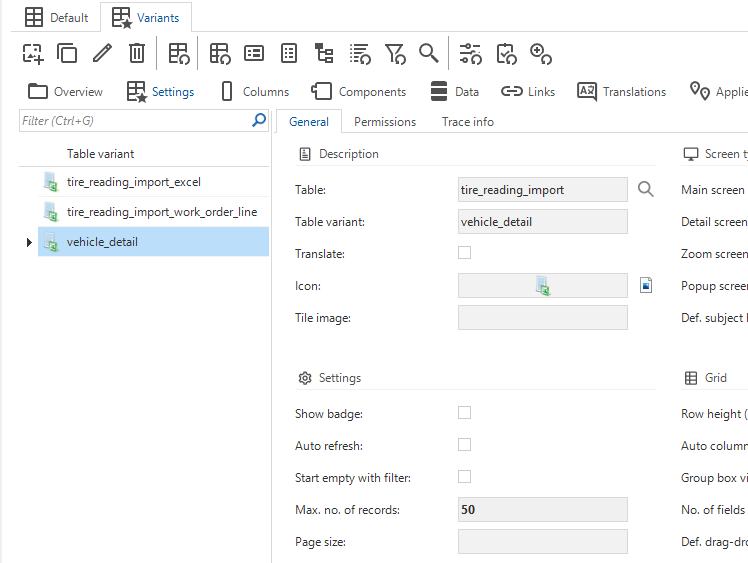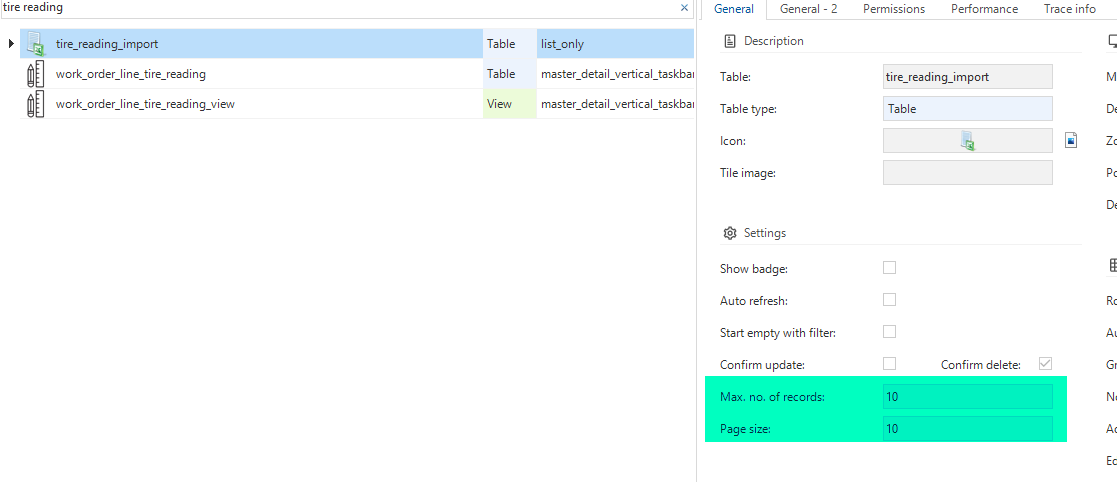We have a table with readings per vehicle. This table is reachable via indicium universal for external parties. They can query by vehicle, sort on date etc etc… That's all fine. But if one forgets to use Ttop=10 of $top=100 for example in the URL, a list of thousans of records can and will be returned.
When setting for example max_no_of_records on a table, the (windows) GUI respects such a setting. Indicium universal however ignores this setting completely.
Will this be introduced in a future release of indicium universal? And will there be a way to query a variant in the future?







